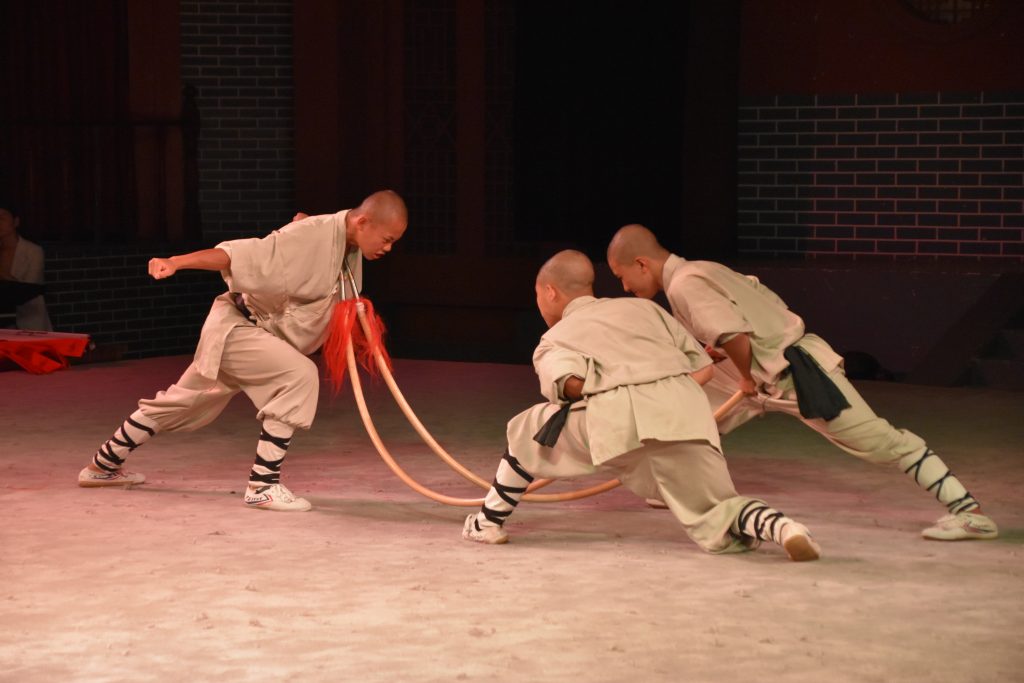

If food and basic goods and services are provided in abundance, the city will eventually improve. This involves keeping the populace well-fed, healthy, and safe from hazards.

61 (bottom).The most basic task in each mission is to maintain the city. Such gates, which seem to be emblems of European architecture in China, may be based on the gate of the Jesuit church referred to as the Nantang (see the discussion below), and a 1 703 illustration of this church shows the distinctive European gateway behind a Chinese-style gate. See Wen Fong & James Watt, Possessing the Past, New York : Metropolitan Museum of Art, and Taipei, National Palace Museum, 1996, plate 357. The Qianlong emperor commissioned a set of twelve hanging scrolls closely reproducing the Yongzheng-era paintings, and the later version of the twelfth month scene shows the same gateway with minor variations, while the building behind it is depicted as slightly larger, more elaborate and more European in style. 15, in Rawski & Rawson 2005, where a detail of the twelfth-month painting on p. The paintings are in the collection of the Palace Museum, Beijing.

See Nathalie Monnet, Le Gengzhitu : Le livre du riz et de la soie, Paris : J.C.

1680-1720) resetting of the Song dynasty Gengzhi tu IftlHHI, illustrations of poems on farming and sericulture, probably around 1696. Probably the most important Kangxi imperial commission involving the use of European linear perspective was Jiao Bingzhen's (MiH j=f, active ca. The short but important career in China of the Italian painter Giovanni Gherardini (1655-1723 ?) in the Kangxi court is examined briefly below. 147-150 for a brief treatment of perspective in China in the 17th century.Ģ. The present paper is not concerned with the reception of European painting and linear perspective in the Ming dynasty (1368-1644). 5, citing Ferdinand Verbiest, Astronomia Europaea (Dillingen, 1687), p. Buglio was assisted by Chinese artists he had trained himself, and copies of all the paintings were displayed in the Jesuit mission in Beijing. 1723-1735), the Qianlong emperor's father, engaged in activities proper to the twelve months of the year, the scroll showing the traditional pleasures of the twelfth month includes a representation of a distinctly exotic, hybrid European-style gateway to a courtyard in front of a building which itself combines European and Chinese architectural elements.3 Although the settings of these paintings mixġ. Among the paintings of a set of twelve hanging scrolls that depict the Yongzheng emperor (itLEE, r. 1662-1722), the Qianlong emperor's grandfather, among them a view of a European garden.1 This is probably the earliest specific reference to European linear perspective in a Qing court context.2 The Qianlong emperor was also not the first Qing emperor to construct buildings in European style. For example, in 1667, Lodovico (Louis) Buglio (1606-1682, arrived in China 1637, Chinese name: Li Leisi ftj!ftl>), the Jesuit Superior in Beijing, had presented a group of three paintings using Western perspective to the Kangxi emperor (Ht!?£, r. The Qianlong f£PH emperor, who reigned officially for 60 years, from 1 736 to 1 795, was not the first Qing emperor for whom artists - either European missionaries or their Chinese students - produced paintings in European style using linear perspective. The Qianlong Emperor's Western Vistas: Linear Perspective and Trompe l'Oeil Illusion in the European Palaces of the Yuanming yuan


 0 kommentar(er)
0 kommentar(er)
